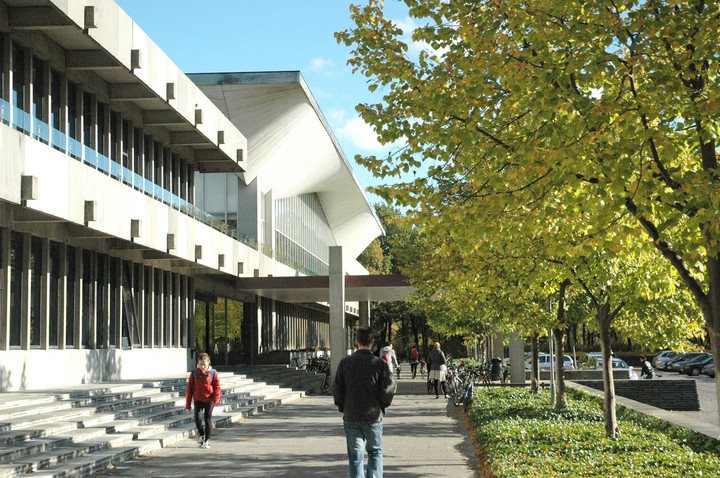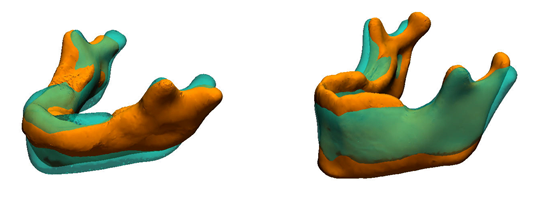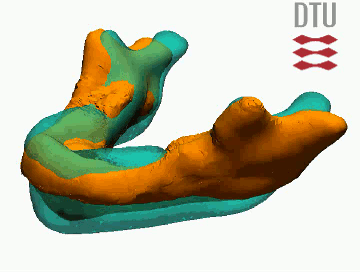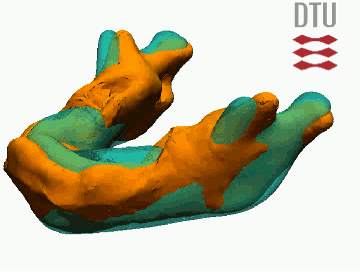Mandibular Metamorphosis
 DTU, Photographer Vibeke Hempler
DTU, Photographer Vibeke Hempler
While I was a student at DTU I participated in the 4M project with a project about mandibular metamorphosis. It was meant to be a preparation for my master thesis. I learned a ton about programming and image analysis.
However my interests soon drifted towards optimization and numerical analysis, so nothing came of the master thesis, but I did contribute to a couple of articles and made a poster for the DTU Vision Days.
The aim of my project was to recreate a growth model of the mandible based on the works of Ph.D Per Rønsholt Andresen. This model used a PCA decomposition on mandibular data to reveal the principal components of growth.
I soon recreated the PCA model of the human mandible. Here’s an image of how that first principal component looked like, projected into 3D space. It resembles growth, complete with tooth eruption 😃

The bluish transparent mandible is the mean shape, and we are traveling +/- 2 standard deviations along the first principal component. Travel any longer, and the results become hysterical.
A key feature of a PCA model is that it forms an orthogonal basis, so all projections will be perpendicular to each other. If there are components in the data, that does not lend it self naturally to this orthogonality, then the PCA won’t reveal them.
In order to investigate if the PCA really did hide something interesting, I used a Q-MAF analysis, that forms a non-orthogonal basis.
The dataset is from CT scans of 6 patients. The poor kids were all scheduled for pediatric craniofacial surgery for a very serious condition called Apert Syndrome.
Having knowledge about bone growth is of key importance to the doctors treating this serious syndrome. It’s in this context we should see the mandibular growth model.
Others were interested in the growht model as well. The dentists at the 3D laboratory, at the School of Dentistry, used the data, and the models, to learn about tooth eruption. The 3D laboratory does not seem to exist on the web anymore, but I found Professor Sven Kreiborg, the founder and leader of the unit.
Way back in 2002 I gave a student poster presentation at the DTU Vision Days. Their copy of my poster is not in such a good state, so here’s a better one.
Mathematical Modelling of Mandibular Metamorphosis
As an extra bonus I found a couple of animations from the poster, that shows the first two minimum noise fractions (MNF).


Just like PCA, MNF is also a method to decompose the dataspace. Where PCA maximizes variance, MNF maximizes signal-to-noise ratio.